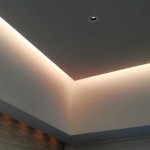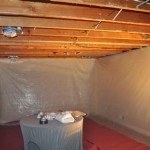Light Fittings For Concrete Ceilings: Essential Aspects to Consider
Concrete ceilings are becoming increasingly popular in modern architecture, offering a sleek and industrial aesthetic. However, choosing the right light fittings for concrete ceilings requires careful consideration to ensure both functionality and style. This article explores the essential aspects to consider when selecting light fittings for concrete ceilings.
1. Ceiling Height and Size
The height and size of the concrete ceiling play a crucial role in the choice of light fittings. High ceilings require fixtures that provide adequate illumination without creating glare. For large ceilings, consider multiple fixtures or linear systems to ensure even distribution of light.
2. Fixture Weight and Load Capacity
Concrete ceilings have a limited load capacity, so it's essential to consider the weight of the light fittings. Heavy fixtures may require additional support or special mounting techniques. Consult an electrician or structural engineer to determine the load capacity of the ceiling.
3. Fixture Mounting Type
There are several mounting options available for light fittings on concrete ceilings. Surface-mounted fixtures are ideal for low ceilings, while recessed fixtures create a seamless look. Pendant lights suspend from the ceiling and provide ambient lighting. Track lighting offers flexibility in positioning and direction.
4. Fixture Material
The material of the light fitting should complement the industrial aesthetic of the concrete ceiling. Metal fixtures, such as aluminum or steel, provide durability and a modern look. Glass fixtures offer transparency and allow natural light to filter through. Consider fixtures with a weather-resistant finish if they will be exposed to moisture.
5. Light Output and Color Temperature
The light output and color temperature of the fixtures should suit the intended use of the space. High-output fixtures with cool color temperatures (e.g., 4000K) create a bright and functional workspace. Warm color temperatures (e.g., 2700K) create a more inviting and cozy atmosphere.
6. Dimming Capability
Dimming capability allows for adjustable lighting intensity, creating different moods and ambiances. Consider fixtures with built-in dimmers or compatible with external dimming systems. This flexibility allows for optimal lighting control in various settings.
7. Style and Design
Finally, the style and design of the light fittings should complement the architectural style of the concrete ceiling. Choose fixtures that match the industrial aesthetic or create a contrasting element to enhance the space's character. From minimalist pendants to vintage chandeliers, there are endless possibilities to create a unique and stunning lighting scheme.
Conclusion
Selecting the right light fittings for concrete ceilings involves careful consideration of factors such as ceiling height, fixture weight, mounting type, material, light output, and style. By understanding these essential aspects, you can make informed decisions that will enhance the functionality, aesthetics, and ambiance of your concrete ceiling space.

Bentu Lv Contemporary Concrete Ceiling Light Lighting Collective

Plan 46 Light Grey Concrete Ceiling Lamp Loftlight Loft Industrial

Concrete Ceiling Lamp Plan 36 18 W Loftlight

Hari Ceiling Light Wh Concrete Gu10 Ip65 Diam 110xh 120 Max Globe Height 58

Contemporary Ceiling Light Three Paeri Square Cube Shaped Glass

Plan 46 Light Grey Concrete Ceiling Lamp Loftlight Loft Industrial

What To Look For With Spots In A Concrete Ceiling Customer Service Q

Premium Photo Concrete Ceiling With Orange Electrical Wiring And Lamps

Making A Light Fixture On Concrete Ceiling R Askanelectrician

Concrete Ceiling Lamp Plan 36 24w Loftlight
Related Posts








